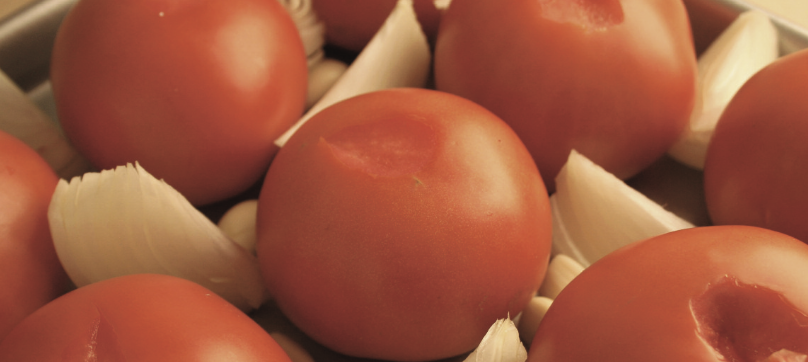Home canning and freezing are good ways to have nutritious food products on hand. Fresh, quality produce preserves well for later use. It’s even better when you are able to grow your own.
Be sure to follow a reputable canning guide to avoid food safety issues. It’s best to follow a tested recipe from a trusted source, such as the USDA’s Extension Services or the Ball Blue Book Guide to Preserving. Be sure not to use Mom’s canning recipes — at least not when you’re canning tomatoes or vegetables. The acid content of product has changed over the years, and canning times have changed right along with it.
Fruits that are high in acid such as peaches, pears, and other soft fruits are good candidates for water-bath canning, while low-acid vegetables, such as corn and green beans, must be canned using a pressure canner.
Light and Lean Tomato Sauce
One of my favorite times of the year is when the tomatoes begin to ripen. I love locally grown tomatoes because they can be fixed in so many ways and are readily available. Here’s a recipe for a light, lean tomato sauce made from fresh tomatoes and frozen in canning jars. The best part of cooking my own food is that I know the quality of the tomatoes, onions, and garlic that go into the sauce. There are no hidden fillers, fats, sugar, or corn syrup in my sauce.
15 tomatoes
2 large onions, peeled and quartered
5 cloves garlic
Cover a large-rimmed baking sheet with heavy-duty foil. Cut the stems from 15 tomatoes (I use medium or large) and place them cut-side down on the tray, leaving about 1/2 inch between them to allow for hot air circulation. Cut a small X on what is now the top of each tomato. Add two large peeled and quartered onions and five cloves of garlic to the baking sheet and place it in a 350° F oven.
Let the vegetable roast until the tomatoes are softened and their skins slip off. Remove the tray from the oven and let the vegetables cool for a few minutes, then skin the tomatoes with a pair of tongs, if desired. Place all of the vegetables into a blender and process.
Pour the mixture into a large, heavy saucepan and simmer at a low temperature, stirring occasionally, until the tomatoes have thickened to the consistency of spaghetti sauce. This may take several hours.
You can add your favorite seasonings now, or wait until you determine the sauce’s use. The intensity of some herbs changes during storage, so go a little light with the seasonings until you are sure you will get just the intensity you want. Remove the thickened sauce from the range and allow it to cool.
Pour into pint or quart jars. Fill the jars to within three-fourths of an inch of the top and freeze. Don’t put the lids on yet or the jar might break when the sauce expands during freezing. Put the lids and rings on after the sauce is frozen. The sauce will last one year in the freezer. Thaw in the refrigerator and use in your favorite tomato-based dish. This is delicious!




